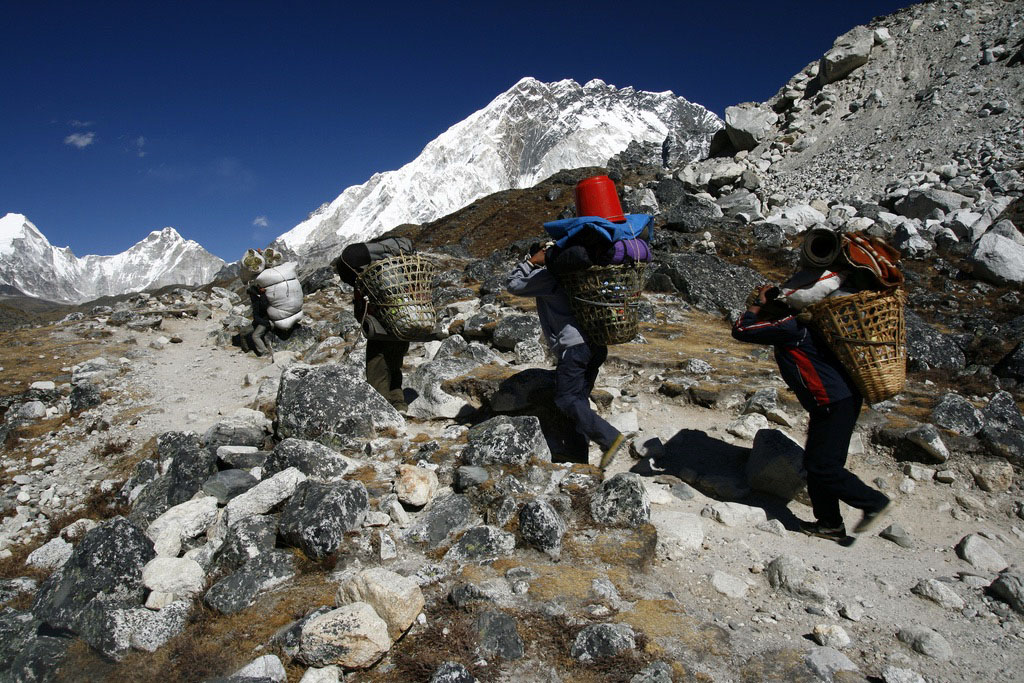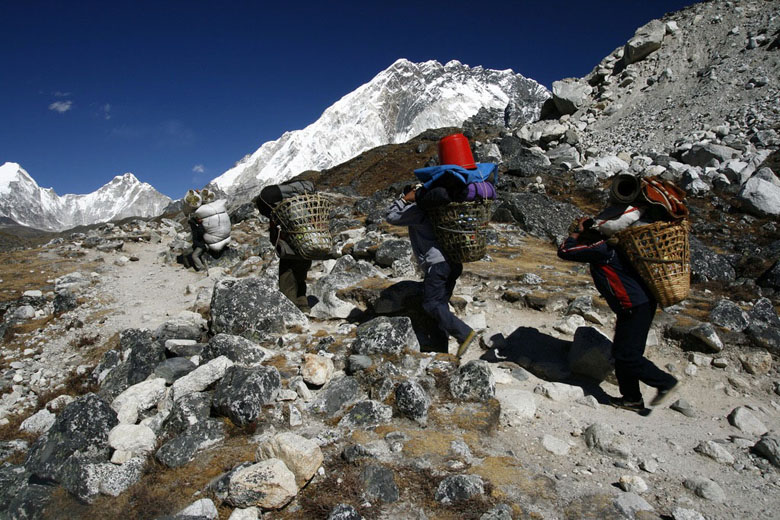The following items are recommended for a typical multi-day trek in Nepal. Some treks have teahouses throughout while others require camping and the necessary equipment. The size of your backpack depends primarily on whether or not you have porters on your trip. Those with porters usually carry a daypack with water, snacks, a camera, and rain gear. Those without porters will need a larger pack to fit all of their personal supplies and sleeping equipment. Certain items can be purchased in Nepal but buying critical pieces of outdoor equipment is not recommended. For more, see Buying and Renting Trekking Gear in Kathmandu.
Sleeping
- Tent (necessary for treks with camping)
- Sleeping bag (–15° bag will suffice on most treks)*
- Sleeping pad
- Silk liner
*Many nights at lower elevations will be hot, but because there will likely be a few very cold nights at high elevation a cold weather bag is unavoidable. At low elevations you can sleep with the silk liner only and using it later extends the life of your bag (oil from skin is bad for expensive down).
Hiking
- Backpack (size depends on whether or not you have porters)
- Hiking boots* (break them in beforehand)
- Camp shoes (your reward after a long day)
- Wool socks (bring a few pairs of varying thickness)
- Lightweight trekking pants
- Trekking shorts
- T-Shirts (lightweight wool is great)
- Underwear
*You will be hiking through a wide range of terrain from mud in warm weather to snow in cold weather. The trail will be rocky throughout. The safest bet for Nepal trekking footwear is full backpacking boots, which provide good support and protection from the elements. If there is a high pass on your trek, you may be walking on snow and the conditions will be cold. A good compromise is to bring backpacking boots and trail shoes—you can use the trail shoes for camp and interchange the two depending on the conditions and how you feel.
Cold Weather
- Long underwear/Wool thermals
- Sweater
- Fleece
- Waterproof jacket and pants
- Heavyweight pants for high elevations (also good for camp)
- Heavy down jacket (can be rented in Kathmandu)
- Winter hat
- Winter gloves
Accessories
- Water purification (pump, tablets, or SteriPen; bring from home)
- Water bottles (at least 3 liters total capacity)
- Baseball cap (the sun is strong at all elevations)
- Hiking poles (lessen the impact on your joints)
- Sunglasses (essential when you cross snow line)
- Head lamp with extra batteries
- Reading materials (Kindle may be best)
- Journal and pens
- Camera with extra batteries
- Daypack (for your rain jacket, snacks, camera, etc.)
- Heavy-duty duffle bag (preferred by porters)
- Gators (many people wear them but they are not mandatory)
Personal Supplies
- Sun screen
- Hand sanitizer
- Toiletries (toothbrush, toothpaste, deodorant, floss, etc.)
- Biodegradable bar soap
- Face/body wipes
- Biodegradable washing liquid
- Throat lozenges, lip balm
- Medications (Ibuprofen, others if necessary)
Extras
- Duct tape (fixes just about everything, at least temporarily. To avoid carrying an entire roll wrap the desired amount around a pencil)
- First aid kit (with moleskin for blisters)
- Extra passport photos and photocopies of your passport



